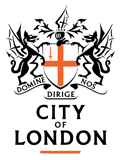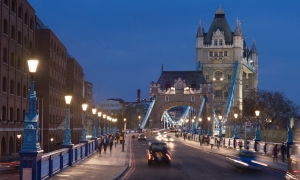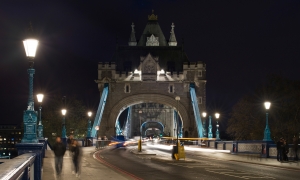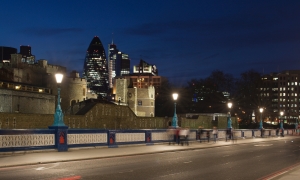Repairing and restoration of exterior luminaires on Tower Bridge
The challenge
DW Windsor was asked to improve the lighting performance and reduce energy consumption of luminaires on the iconic Tower Bridge, as part of a larger heritage upgrade along the Thames. Over the years functional replacements had been carried out, leading to the loss of many original parts and unsympathetic restoration work of the 250W SON scheme. The new scheme needed to provide uniform lighting across both the carriageway and footway while providing for the safe passing of ships and reducing energy as part of the City of London’s carbon reduction commitment.
Clients and partners
-

Client
City of London
The solution
DW Windsor provided a total restoration of the light fittings, including the upgrade to more efficient electronically controlled 210W CDM Elite lamps. Although LEDs were considered, the number needed to give the required performance could not be accommodated in the existing lanterns. When the technology becomes available, the lamps will be dimmed from 60% to 40% between midnight and 6am, to give additional savings.
A particularly important consideration was to give adequate light for pedestrians and drivers while preventing passing ships from being distracted by light from the bridge. To control backward light spill into the Thames, a special white glazing panel was used on the sections of the lanterns directly facing the river. Distribution of light was further controlled using DW Windsor’s patented reflector system. The Diamond Optic® comprises four multi-faceted internal reflectors arranged in the shape of a diamond, which can be independently adjusted to control the light distribution from each lantern.
The bridge had to remain open for the whole restoration period, so lanterns were removed in phases. Because of the harsh nature of the environment, the lanterns were repainted using the latest paint technology, PSX (an extremely resilient material for marine environments), further minimising disruption to the use of the bridge due to maintenance.
The scheme now attracts a 26% energy saving, representing 7,788 kw/h per year.
" We chose DW Windsor because of the quality of the design to control the light forwards and not backwards into the river, the light output, distribution and overall uniformity of DW Windsor’s restored lanterns was second to none "
Marlon Edwards, Assistant Street Lighting Engineer at the City of London


